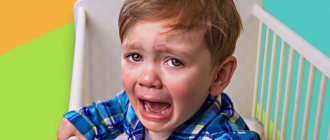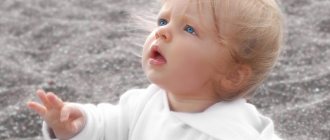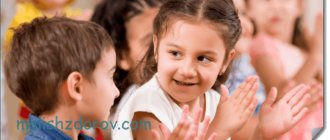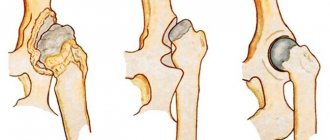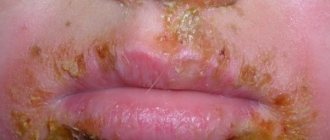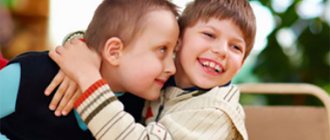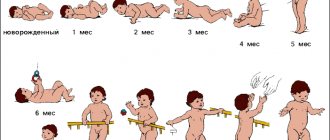Parents and caregivers who notice certain changes or problems in their 3-year-old may wonder if they indicate autism.
Autism spectrum disorder (ASD) affects approximately 1 in 59 children and covers a range of conditions including autism and Asperger's syndrome. Behavioral symptoms often begin in early childhood and are noticed by parents before the child's first year of birth. Despite this, the Centers for Disease Control and Prevention (CDC) reports that most children with ASD are not diagnosed until age 4.
What is autism?
Autism is one of the most common neurological disorders. This condition is characterized by problems with social interaction, communication, flexibility of thinking and behavior. Children with ASD have difficulty communicating with others, developing friendships, and understanding other people's feelings. Children may also have repetitive thoughts and perform repetitive actions. People with autism spectrum disorder often have high rates of co-occurring conditions. Some of these conditions include:
- seizures;
- digestive disorder;
- mental problems such as anxiety or depression.
According to some studies, 70% of children with autism have one comorbid condition, while 41% have two or more, including attention deficit hyperactivity disorder (ADHD).
How to help your child
There is no single solution or approach to treating autism in children. Each case is unique and requires an individual rehabilitation program. During the study of this problem, child psychologists were able to formulate several concepts that should be adhered to. It is believed that the best results are obtained from classes with a child under 5 years of age. Perhaps the active development of the brain and the social model of behavior affect it.
The goal of treatment is to improve their mental development, social relationships: communication, everyday skills, and achieve independence in the future.
A child with autism needs additional sessions with a speech therapist. Art therapy is considered one of the most effective methods of therapy. This includes modeling, drawing, music lessons - they help the child not only develop fine motor skills, coordination, attention, but also inspires the child’s confidence and relieves anxiety. Exercises with animals: horses, dogs and occupational therapy have also shown themselves to be effective in the treatment of autism.
Nowadays a wide range of medications is used: psychotropic drugs, antidepressants, but there is not always a need for them, and indications for use are strictly limited due to severe side effects.
Signs of autism at 3 years old
Signs and symptoms of autism in 3-year-old children may include:
Social withdrawal
Children with autism cannot play with other children. They:
- play alone;
- not interested in communication;
- do not share toys;
- do not understand the rules of the game;
- do not answer the name;
- can't pretend.
Differences in emotional expression
Children with autism experience a full range of emotions, but they express them differently. 3 year old child with ASD:
- has difficulty expressing his feelings;
- has problems understanding other people's feelings;
- avoids physical contact with other people;
- does not like to be hugged;
- shows no emotion when parents leave the room.
Difficulties in communication
At 3 years of age, a child with ASD has:
- delay or regression in language skills;
- speaks in a singing manner;
- doesn't speak at all;
- avoids eye contact;
- seems inexpressive;
- does not answer questions;
- repeats words, phrases or sounds, doctors call this echolalia;
- uses incorrect pronouns, such as “you” instead of “I”;
- does not use gestures;
- does not respond to instructions;
- doesn't understand humor.
Behavior
Children with autism often exhibit unusual or repetitive behavior. They can:
- wave your arms several times;
- rotate;
- move back and forth;
- play only with a certain toy;
- have obsessive behavior;
- arrange toys in an orderly manner;
- hyperactive in certain situations;
- have a short attention span;
- insist on certain procedures or rituals;
- don't like it when someone disrupts their routine or ritual;
Other symptoms of autism in three-year-old children
- aggression;
- impulsiveness;
- causing bodily harm;
- intense reactions to sounds, smells, textures, colors or tastes;
- outbursts of anger;
- unusual eating habits.
Not all autistic children show these signs, and many neurotypical children show some of them at times. For this reason, professional diagnosis is necessary.
Causes of autism
For more than 70 years, autism has been studied by psychiatrists, but even today experts cannot accurately name the causes of the disorder. The number of theories on this matter is growing, but so far they have no clinical justification. Main versions:
- Heredity. The anamnesis of parents of sick children sometimes reveals the presence of mental disorders, but most often these are simply consequences of the shock caused by the diagnosis;
- Sequence. As psychologists have found, most often the firstborn in a family suffers from autism. But as the number of children increases, the likelihood of a baby with a disability being born increases (i.e., the sixth child has a higher risk of developing the disease than the fifth);
- Viral disease of the mother during pregnancy or childbirth. The most plausible theory explaining impaired brain development in the fetus. It is for this reason that the prevention of diseases such as measles, rubella, mumps and chickenpox are so important during pregnancy.
Autistic children are always self-absorbed, it is difficult to encourage them to interact, they prefer to observe than to communicate
Age-related signs of autism
As children with autism age, they may experience difficulties with communication, socialization, and behavior. This is partly due to increased social demands at school and in society. School-age children and adolescents may have some signs:
- need for routine;
- preference for solitude;
- lack of friendly relations;
- aggression;
- anxiety or frustration when routines are disrupted;
- anxiety;
- difficulty carrying on a conversation;
- increased or decreased sense of smell, taste, touch, vision and hearing;
- fixation on specific topics or activities;
- problems interpreting nonverbal and social signals;
- failure to follow rules in school and sports;
- unusual posture or movements such as biting or snapping fingers;
- unusual speech patterns and tone.
Autism is 4 times more common in boys than girls. Research shows that autistic girls have milder symptoms. This can lead to underdiagnosis or misdiagnosis and difficulties with treatment. The authors of a study of more than 800 children with autism reported that girls and boys had differences in brain structure and behavior. Girls tend to have less repetitive behavior.
At what age does the disease appear?
According to medical statistics, childhood autism is currently diagnosed in 3-4 cases per hundred thousand. If we take into account atypical autism, accompanied by mental retardation, this figure increases to 20 cases per hundred thousand. Boys suffer from the pathology more often than girls, approximately 4 times.
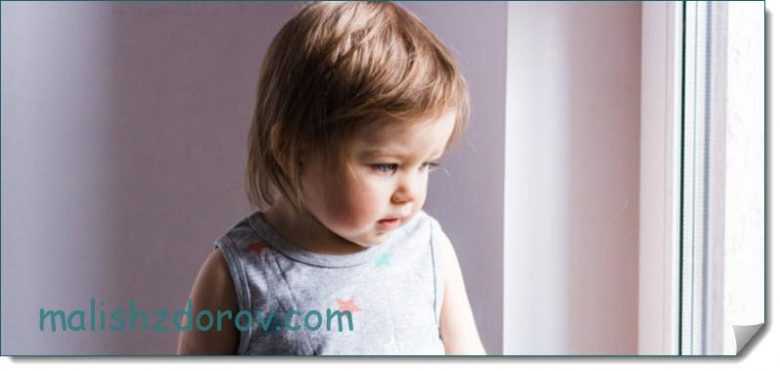
The disorder in question can appear at any age. Signs of pathology depend on the age of the child. If we conditionally divide the disease into types, we can distinguish the following:
- Children (up to three years old).
- Children (from three to eleven years old).
- Teenage (after eleven years).
In most cases, the pathology is diagnosed within 2 to 3 years. At this age, signs of the disease appear most clearly. The child becomes withdrawn and tries to limit himself from peers and adults. At an earlier age, signs of autism also appear, but not all parents notice this. As a rule, the first suspicions arise when the baby goes to the garden. At the same time, mom and dad see that their baby is different from others.
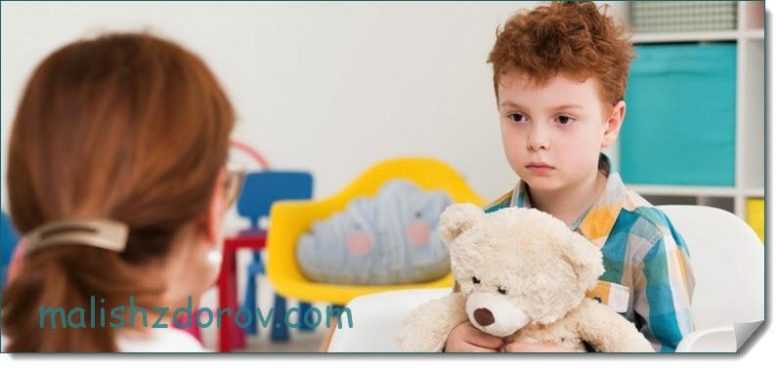
If the family already has one child suffering from autism, then in the second child the signs of this disease are easier for parents to recognize. Closedness and antisocial behavior are immediately noticeable. Pathology can manifest itself at an older age. Often the disorder is diagnosed after 5 years. In such children, as a rule, the intelligence is higher than in children whose disease was diagnosed at 3 years old. At the same time, social communication skills are preserved, but the baby still remains withdrawn.
Diagnosis of autism in children 3 years old
In order to know when to seek help, it is important to know the basic milestones that a child should have at each age. A pediatrician or child psychiatrist can make a formal diagnosis. These specialists will observe the child's behavior and monitor his development. Doctors will also check your child's hearing and vision and perform additional tests to rule out other underlying conditions that may be causing the symptoms. For example, a child with hearing problems may have social difficulties or not respond when spoken to. A doctor can diagnose some symptoms of autism.
Early intervention is key to improving outcomes in autistic children. Children can be taught useful social, communication and behavioral skills. There are many options for supporting children with ASD, and these will vary depending on the child's symptoms.
Therapy and other forms of support that may be helpful for children with autism include:
- behavioral therapy;
- communication skills training;
- educational program;
- family therapy;
- occupational therapy;
- physical therapy;
- psychological intervention;
- speech therapy;
- use of drugs;
- Lifestyle changes, such as creating and sticking to a specific routine.
It is important to manage any conditions that occur in children, adolescents and adults with autism. These may include:
- ADHD;
- depression;
- anxiety;
- seizures.
Forms of the disease
Doctors distinguish several types of pathology in people. These include:
- Kanner's syndrome. The concept of early childhood autism was used back in 1943 by the Austrian psychiatrist Leo Kanner. This type of disease is diagnosed at an early age (up to one and a half years). Symptoms include a lack of sense of self-preservation, social contact, speech impairment, and peculiarities of movement and gait.
- Rett syndrome. This form is considered the most severe. As practice shows, treatment of this type of disease does not produce results. Rett syndrome is diagnosed only in girls and manifests itself at an early age. The pathology is characterized by severe mental retardation, physical spectrum disorders, and spinal curvature.
- Atypical autism. It is often diagnosed in children after 7-10 years of age; before that it can be hidden. Signs of pathology in the child are absent or mild. Characteristic symptoms are disturbances in speech, thinking, and physical behavior.
- Asperger's syndrome. This type of autism spectrum disorder is detected in children from approximately two years of age. In 80% of cases, it is boys who suffer. In this case, the child experiences a disruption in the development of social connections with peers and adults, as well as a decrease in sensitivity. With timely correction of behavior, such children may well receive an education and become a full-fledged member of society.
Today, another form of pathology is known, namely high-functioning or partial autism. This form of the disease is characterized by fairly high intelligence, but children have difficulty establishing social connections with other people.
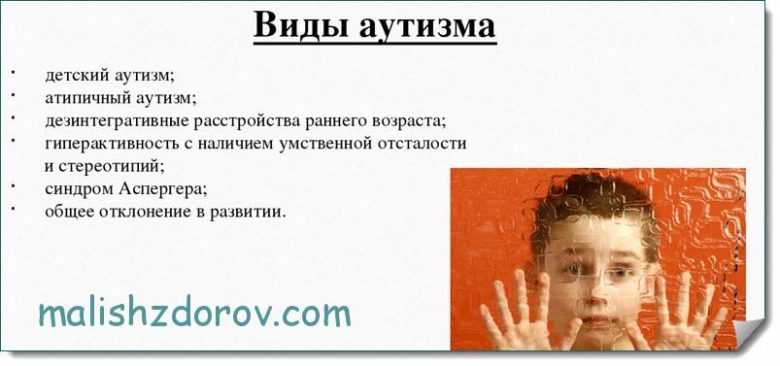
The baby experiences negative sensations when other people try to come into close contact with him. Autistic-like behavior is diagnosed from an early age or from 5-6 years.
conclusions
The sooner the child receives an accurate diagnosis and support, the better the outcome. Parents and caregivers should consult a doctor if they notice signs of autism in their child. There is no cure for autism, and many people with autism feel that the condition is an integral part of their personality. Doctors can help people manage symptoms and maintain happy, healthy lives.
Research article on the topic: Children with autism are often abused by their siblings.

